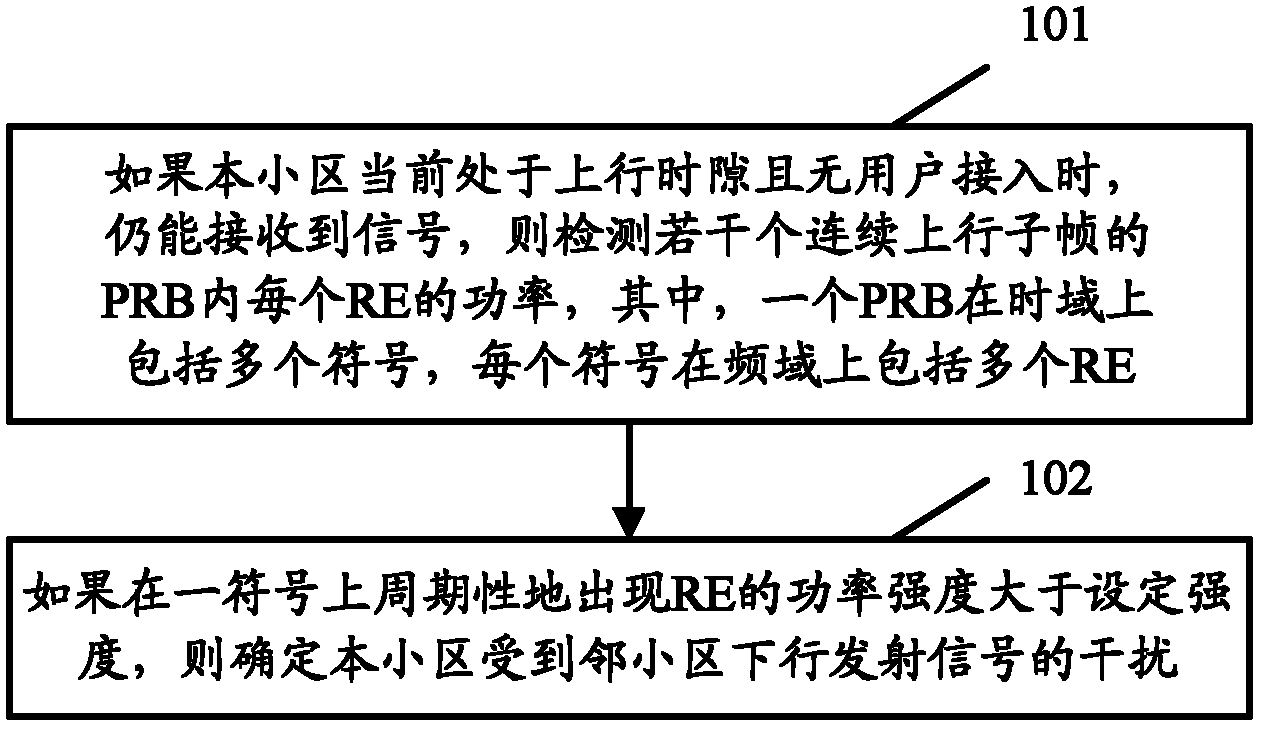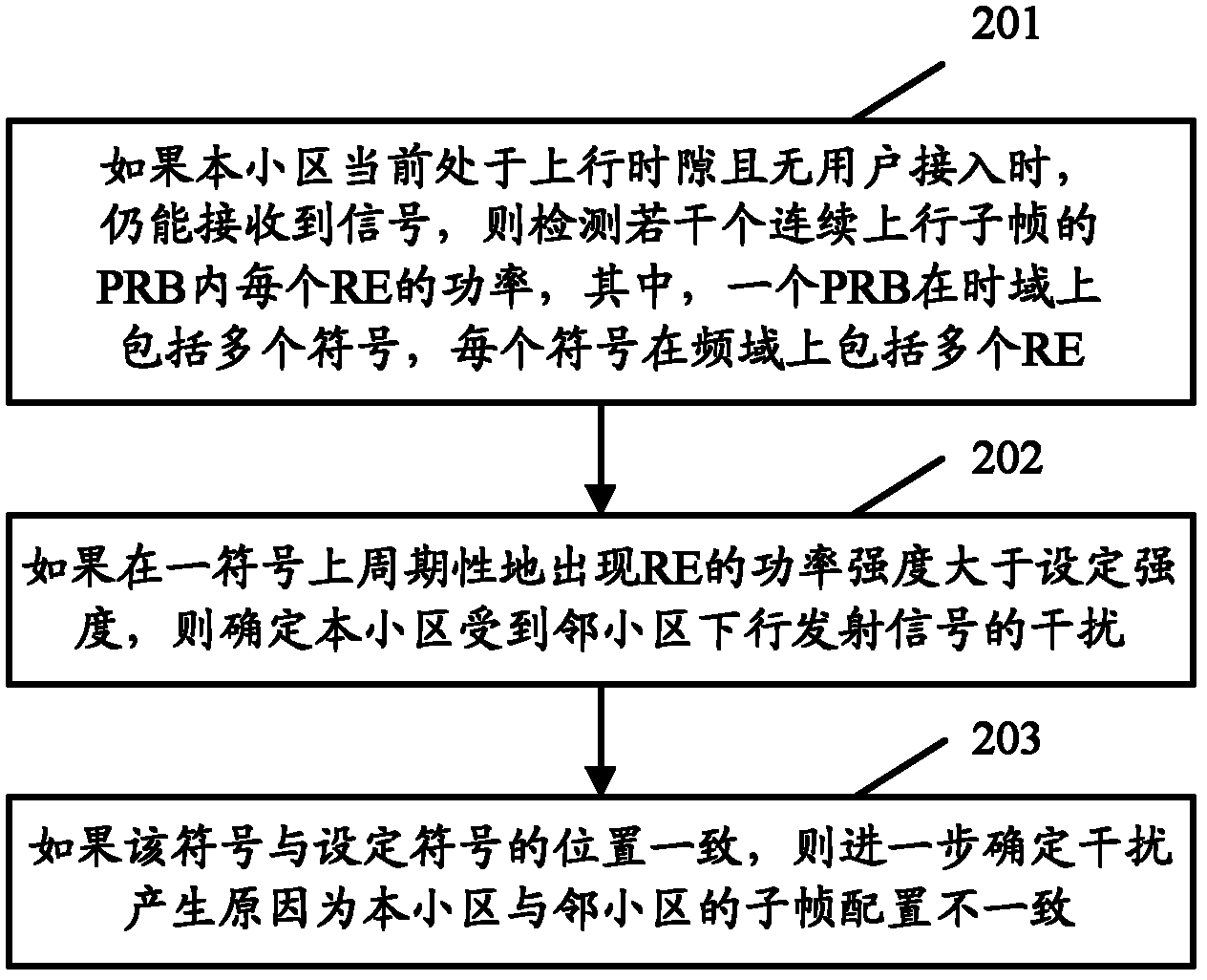Method for detecting interference in long-term evolution system and equipment
A long-term evolution and consistent technology, applied in the field of interference detection, can solve the problems of inability to restore base stations, inability to locate quickly and accurately, and difficult to eliminate external interference, to achieve the effect of eliminating external interference and improving efficiency
- Summary
- Abstract
- Description
- Claims
- Application Information
AI Technical Summary
Problems solved by technology
Method used
Image
Examples
Embodiment Construction
[0018] In the embodiment of the present invention, in the LTE system, if the cell can still receive signals when it is currently in an uplink time slot and no user accesses, the power of each RE in the PRB of several consecutive uplink subframes is detected, wherein one PRB includes multiple symbols in the time domain, and each symbol includes multiple REs in the frequency domain; if the power strength of REs that periodically occurs on a symbol is greater than the set strength, it is determined that the cell is receiving downlink transmission signals from neighboring cells interference.
[0019] figure 1 It is a schematic flow diagram of a specific embodiment of the method of the present invention.
[0020] see figure 1 As shown, the method for detecting interference in the LTE system provided by the embodiment of the present invention specifically includes the following steps:
[0021] Step 101: If the cell can still receive signals when it is currently in an uplink time ...
PUM
 Login to View More
Login to View More Abstract
Description
Claims
Application Information
 Login to View More
Login to View More - R&D
- Intellectual Property
- Life Sciences
- Materials
- Tech Scout
- Unparalleled Data Quality
- Higher Quality Content
- 60% Fewer Hallucinations
Browse by: Latest US Patents, China's latest patents, Technical Efficacy Thesaurus, Application Domain, Technology Topic, Popular Technical Reports.
© 2025 PatSnap. All rights reserved.Legal|Privacy policy|Modern Slavery Act Transparency Statement|Sitemap|About US| Contact US: help@patsnap.com



